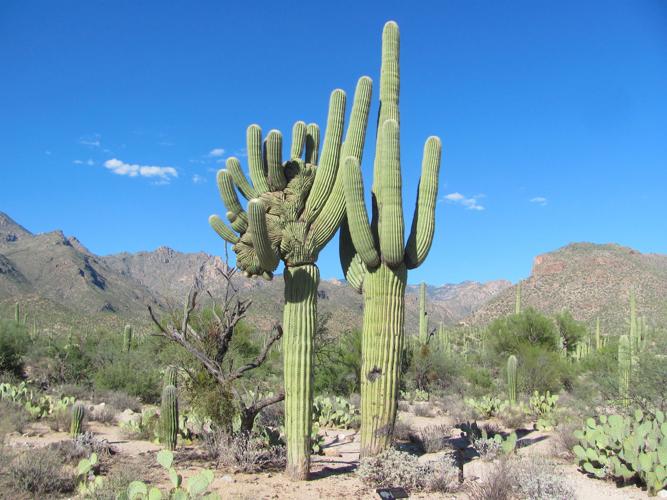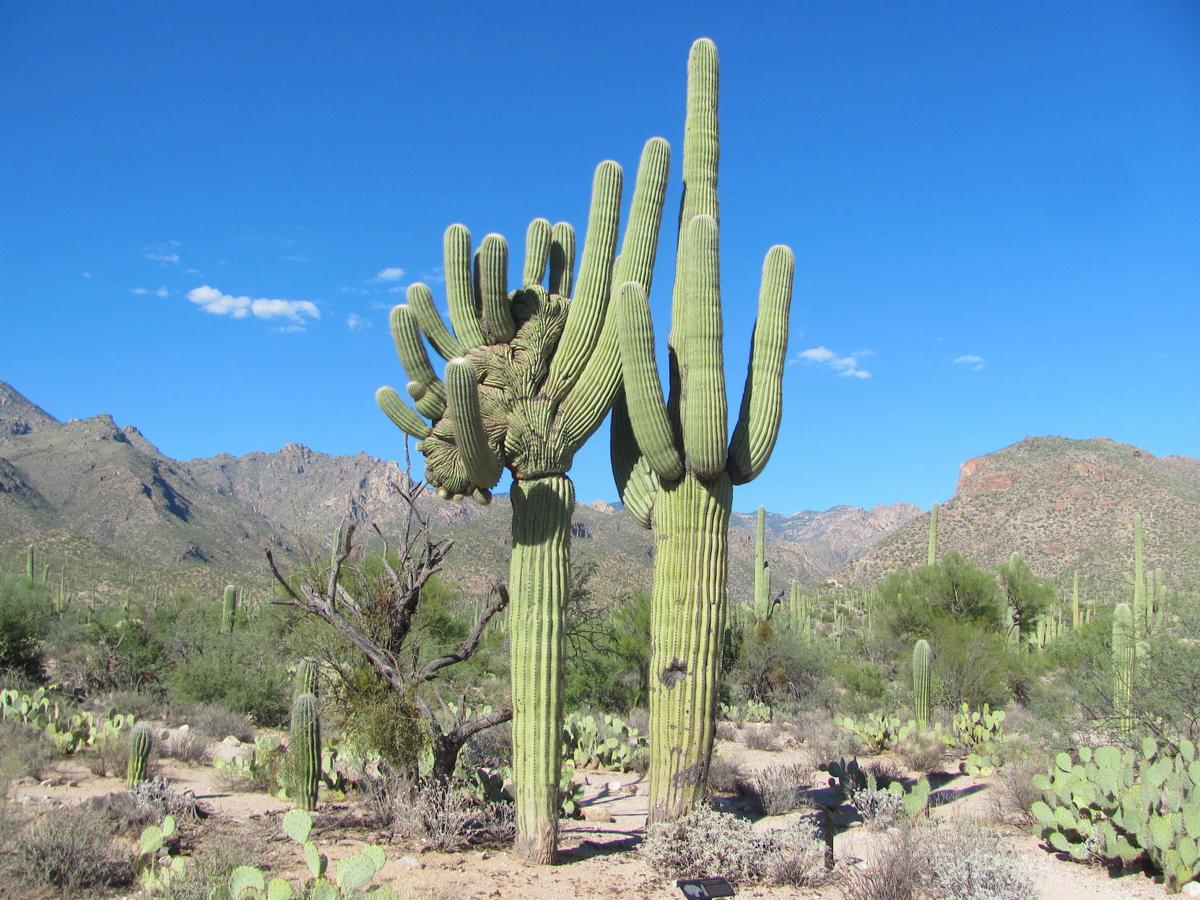Bob Cardell calls it the “crest quest.”
It’s his effort, begun more than a dozen years ago, to find and document as many crested saguaros as possible.
Cardell, an avid explorer and president of the Southern Arizona Hiking Club, has long been fascinated by the eye-catching, strangely shaped saguaros known as cristate, or crested, cacti because of their fan-shaped crests.
“I now have recorded 2,237 of these crested beauties,” Cardell said. “I still love looking for new ones when I have time.”
When we last caught up with the crest quest five years ago, the total recorded was 2,063 — meaning that Cardell has found 174 additional specimens since then.
He has tracked down crested saguaros in almost every part of the state where the species grows — from desert areas around Tucson to remote regions in Western and Central Arizona.

One of the many crested saguaros documented by Tucsonan Bob Cardell.
“The appeal, for me, is finding them and letting other people know about the beauty of them,” Cardell has said in explaining why he has devoted so much time to hunting for the crested giants. “They’re just beautiful freaks of nature.”
The quest often involves travel in four-wheel drive vehicles and extensive treks. But some crested saguaros grow along city streets and on public lands near Tucson. One place to see a mature specimen is along the short Bajada Loop Nature Trail near the visitor center in Sabino Canyon northeast of Tucson.
An obvious question when you see a crested saguaro: What caused it to grow in such a weird shape?
A sign in Sabino Canyon addresses the question. It says: “Though this growth is the matter of great curiosity, to date no one knows exactly the cause of it. Many theories have been proposed including virus, genetics, lightning, frost, microscopic insects, and abnormal lateral growth tip division. However, none of these have been confirmed.”






